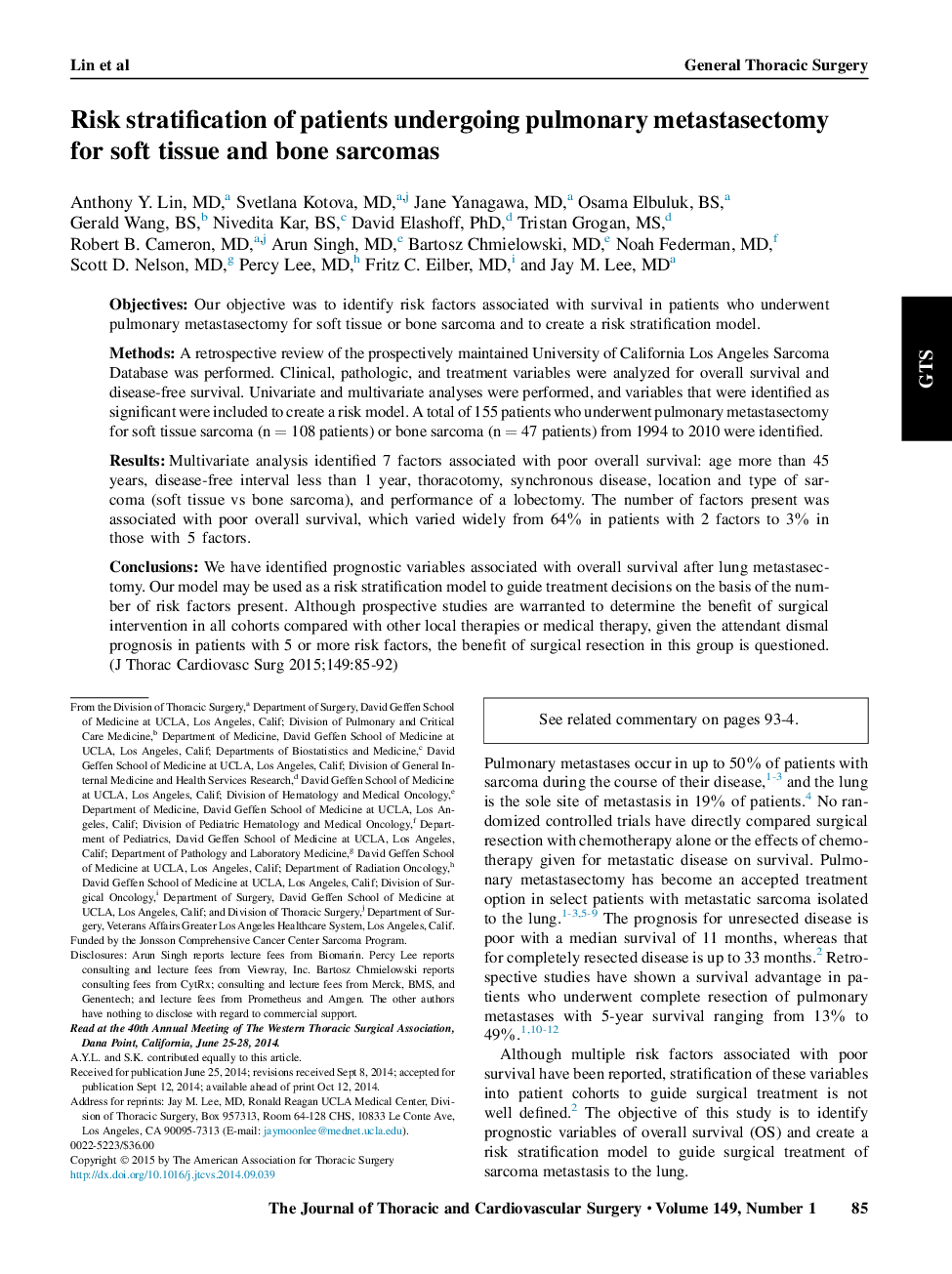| Article ID | Journal | Published Year | Pages | File Type |
|---|---|---|---|---|
| 2980037 | The Journal of Thoracic and Cardiovascular Surgery | 2015 | 8 Pages |
ObjectivesOur objective was to identify risk factors associated with survival in patients who underwent pulmonary metastasectomy for soft tissue or bone sarcoma and to create a risk stratification model.MethodsA retrospective review of the prospectively maintained University of California Los Angeles Sarcoma Database was performed. Clinical, pathologic, and treatment variables were analyzed for overall survival and disease-free survival. Univariate and multivariate analyses were performed, and variables that were identified as significant were included to create a risk model. A total of 155 patients who underwent pulmonary metastasectomy for soft tissue sarcoma (n = 108 patients) or bone sarcoma (n = 47 patients) from 1994 to 2010 were identified.ResultsMultivariate analysis identified 7 factors associated with poor overall survival: age more than 45 years, disease-free interval less than 1 year, thoracotomy, synchronous disease, location and type of sarcoma (soft tissue vs bone sarcoma), and performance of a lobectomy. The number of factors present was associated with poor overall survival, which varied widely from 64% in patients with 2 factors to 3% in those with 5 factors.ConclusionsWe have identified prognostic variables associated with overall survival after lung metastasectomy. Our model may be used as a risk stratification model to guide treatment decisions on the basis of the number of risk factors present. Although prospective studies are warranted to determine the benefit of surgical intervention in all cohorts compared with other local therapies or medical therapy, given the attendant dismal prognosis in patients with 5 or more risk factors, the benefit of surgical resection in this group is questioned.
